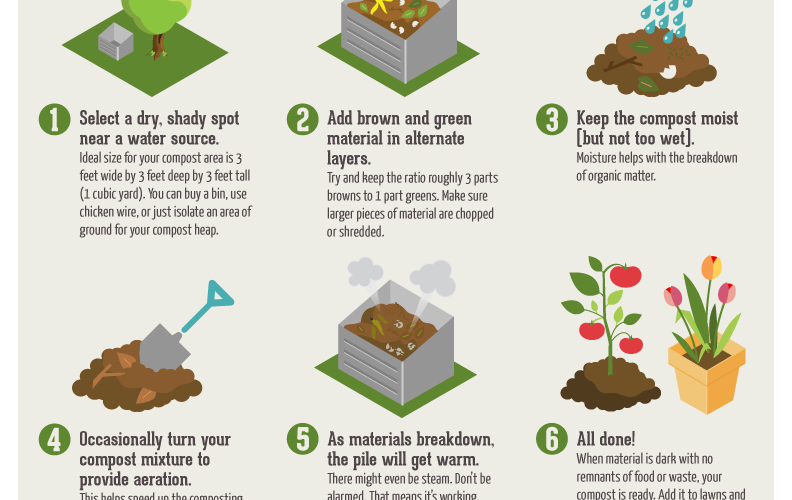Composting is the process of turning unwanted organic matter into usable soil. The resultant soil is typically high in nutrients and nitrogenous compounds, making it excellent for growing plants in. Composting can also significantly reduce the amount of waste sent to the landfill each year as almost all household wastes can either be recycled or composted. With the right knowledge, composting is a simple process which can be performed by anybody with a bit of space.
Table scraps, yard waste, paper products are turned to compost by this essential ingredient: microorganisms. These small creatures play the part of digesting waste in a compost pile and rendering it to rich soil. These organisms do not need to be added by the user – they are already present in vast quantities in the environment. The best example of a natural composting environment is the blanket of leaves found in any wooded area. Leaves, dead animals, and wood are all converted to rich black loam by microorganisms.
The easiest way to compost is through the use of a compost pile. A compost pile is simply a small area where wastes are added and compost is removed periodically as microorganisms break them down. They need not be closed to the environment, although some freestanding “composting units” are. The two major factors that affect the rate of decomposition of compost are aeration and moisture. Aeration is usually achieved by regularly turning the compost with a pitchfork to keep it light, fluffy, and full of air. This promotes the growth of aerobic bacteria, or bacteria which need oxygen to digest plant matter. Anaerobic bacteria are less efficient at digesting waste and can produce harmful and smelly by-products like hydrogen sulfide and methane, so it is best to keep a compost pile well-aerated for maximum efficiency.
The moisture content is also critical. Microorganisms can only function with an adequate supply of water. A properly-moistened compost pile should always be damp to the touch. If the compost pile is too dry, the composting process will slow and anaerobic bacteria will take over; if the moisture is too high, aeration will me less effective. The target moisture for a compost pile is 40% to 60% water – damp enough that it sticks to the fingers, but not muddy or sloppy.
There are two major types of compost piles: open pens and enclosed composters. The first and most basic container is simply a small pen. The sides of this pen are usually made of wolmanized wood, chicken wire, or anything else resistant to the effects of biodegradation. The bottom of the compost pile should rest on soil with good drainage as standing water will make a mess of any composting operation. In general, the wider the pile, the better air can reach all of the compost and the quicker the waste will break down. However, spreading waste too wide releases heat generated by the microorganisms and is detrimental to the process. Keep the compost pile at least twelve inches thick at all times.
The other option is a composting container. These are enclosed plastic or metal bins where composting takes place without the effects of weather. Moisture and compost content can be more tightly controlled, and these containers can often be tilted and rolled for easy aeration. More suited for urban environments, these containers can eliminate a compost pile from becoming a neighborhood eyesore. Furthermore, they can usually be tilted for easy removal of the finished compost.
In any case, the final product of composting is simply rich, fertilized soil – great for use in any garden.
References:
The Garden Of Oz: Composting 101
How To Compost



